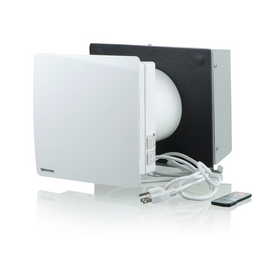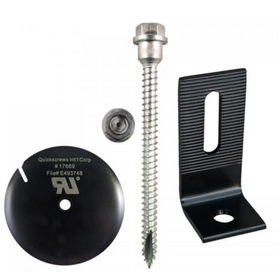
Accessory Dwelling Units: The Appeal of Living Small
Last Updated: Feb 4, 2025On a quiet street next to an alley in South Minneapolis a small two-story square gray modernist home and eye-popping orange window trim represent a new style of housing that has emerged in dense urban neighborhoods.
Table of Contents
- What is an ADU?
What is an ADU?
Legally called an “accessory dwelling unit,” or ADU, the home is a third the size of a typical new home in the city. ADUs – often called “second suites” -- are generally a few hundred square feet and built as an addition to a home or a separate standalone structure. Homeowners can cordon off a section of their existing homes to create ADUs, too, with city approval.

Chris Iverson, the home’s owner, understood his role as a groundbreaker for ADUs in his neighborhood and went with a sleek design, so out-of-the-ordinary dog walkers, bikers, and drives often stop and have a look.
“The architecture gets a lot of interest from people,” said Iverson, who works out of his home in the information technology field. “I’ve had people stop by and take photos and say, ‘we love your house.’”
Save Energy
Shop home improvement products that help save and conserve energy (power) in your home.

Vents TwinFresh Comfo RA1-50-2 Ductless Energy Recovery Ventilator
Vents
In Stock

Stiebel Eltron Accelera 300 E Heat Pump Water Heater
Stiebel Eltron
Out of Stock

AFM Safecoat Almighty Adhesive Case of 12
AFM Safecoat
In Stock

Emporia Classic Level 2 48 AMP EV Charger UL Listed
Emporia
In Stock
2 Colors

Stiebel Eltron CON 300-2 Premium Wall-Mounted Convection Heater - 202030
Stiebel Eltron
Out of Stock

Santa Fe Compact70 Dehumidifier - 4044110
Santa Fe
In Stock

AFM Safecoat 3 in 1 Adhesive
AFM Safecoat
In Stock

QuickBOLT QB2 with Microflashing Multi Roof Mount Solar Panel Fastener Kit
QuickBOLT
In Stock

Stiebel Eltron DHC-E 8/10-2 Plus Point-of-Use Electric Tankless Water Heater - 202145
Stiebel Eltron
In Stock

Stiebel Eltron Accelera 220 E Heat Pump Water Heater
Stiebel Eltron
In Stock

Driving the trend now, as in past decades, was a desire to live in the city, to offer an affordable option to young couples who might not otherwise be able to buy a home, and to allow parents to age in place near family members who can provide support, companionship, and love. Others want ADUs to lease them as Airbnbs or longer-term rentals.
“There is a more urban mentality to ADUs,” said Christopher Strom, the architect of Iverson’s home. “It’s more about proximity to amenities than amenities you would have in the home. It’s for people who heavily weigh the location of where they’re living than having a large house.”

The door leads to a staircase to the second, wide-open area serving as the main living area. It has a kitchen against a wall, a kitchen table, and a living room section with a couch. It’s enough room for Iverson, who is single, to entertain a few guests.
Outside the living area, a sliding door opens to a large deck built of ipe lumber. The deck in the warm weather months acts as a second room for lounging, parties, and grilling. On top, the deck offers a bird’s eye view of the neighborhood and the yard, while underneath, it serves as a trellis.

Back inside, yellow pocket doors with clouded window glass separate the living room/kitchen with the ADU’s 11’ by 11’ bedroom. Surprisingly, the bedroom is large enough to boast a walk-in closet on one side, a bathroom, and a washer/dryer on the other.
Iverson sought quality in the home’s materials, opting for solid wood pocket doors, a dark brown Marmoleum floor, radiant floor heat, and an air exchanger.
Iverson compiled with the ADU ordinance requiring separate electric and gas connections. He managed to hook into the existing water piping that serves the duplex, with no water pressure issues reported by his tenants or experienced by him.

Strom, the owner of Christopher Strom Architects, said on average, he receives three calls a week from homeowners interested in building ADUs, though few follow through because of cost. The high price of materials and housing in Minneapolis contributes to an average ADU price generally north of $200,000.
His firm has built half a dozen ADUs for various functions – an Airbnb, a home for parents, a second room. He touts ADUs can be a good option for many people but concedes the cost will be too prohibitive for everyone.

For Iverson being avatar was satisfactory enough for Iverson. He figures he achieved his desire to promote high density living in an eco-friendly environment.
Frank Jossi
Based in St. Paul, Frank Jossi is a journalist, editor and content strategist. He covers clean energy in Minnesota for Midwest Energy News and writes frequently for Finance & Commerce. His work has appeared in more than 70 local, national and international publications.






